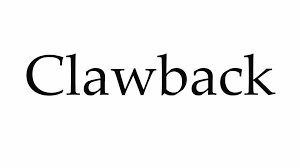
Patients Overpay For Prescriptions 23% Of The Time — Called ‘Clawbacks’
The USC study analyzed the prices that 1.6 million people paid for 9.5 million prescriptions in the first half of 2013, based on data from Optum Clinformatics, an organization that sells anonymized claims data for analysis, and National Average Retail Price (NARP) data, which contained drug prices paid by insurers and was based on a national survey of pharmacists.
It showed that the overpayments totaled $135 million during that six-month period.
“Clawback” is Charging More than the Drug Costs
The practice of charging a copay that is higher than the full cost of a drug is called a “clawback” because the middlemen that handle drug claims for insurance companies essentially “claw back” the extra dollars from the pharmacy. (The middlemen, known as pharmacy benefit managers, include Express Scripts, CVS Caremark and OptumRx. Express Scripts and CVS Caremark say they don’t use clawbacks. OptumRx declined immediately to comment.)
-
Here’s how it works: After taking your insurance card, your pharmacist says you owe a $10 copay, which you pay, assuming that the drug costs more than $10 and your insurance is covering the rest. But unbeknownst to you, the drug actually cost only $7, and the PBM claws back the extra $3. Had you paid out-of-pocket, you would have gotten a better deal.
“Clearly this is going on [at a] much higher frequency than most people imagine,” said Geoffrey Joyce, who directs health policy at the center and was a coauthor on the study. “You’re penalizing people for having insurance.”
| Clawbacks for 20 Most Frequently Prescribed Drugs | ||||
| Source: USC Schaeffer Center, “Overpaying for Prescription Drugs: The Copay Clawback Phenomenon | ||||
| Rank | Drug Name | Number of Claims with Clawbacks |
% of Claims involving Clawbacks |
Avg Overpayment among Claims with Clawbacks |
| 1 | hydrocodone-acetaminophen | 119,587 | 36.15% | $6.94 |
| 2 | levothyroxine sodium | 108,910 | 42.06% | $6.12 |
| 3 | azithromycin | 38,600 | 17.67% | $8.53 |
| 4 | lisinopril | 103,612 | 48.75% | $7.17 |
| 5 | fluticasone propionate | 3,427 | 2.09% | $17.55 |
| 6 | simvastatin | 84,324 | 51.97% | $6.33 |
| 7 | atorvastatin calcium | 12,199 | 7.53% | $8.82 |
| 8 | omeprazole | 17,858 | 11.31% | $10.34 |
| 9 | amoxicillin | 54,770 | 35.73% | $6.21 |
| 10 | amlodipine besylate | 89,688 | 59.77% | $6.98 |
| 11 | sertraline hydrochloride | 60,328 | 46.83% | $5.94 |
| 12 | amox trihydrate/potassium clavulanate | 3,636 | 3.2% | $12.07 |
| 13 | zolpidem tartrate | 67,516 | 60.49% | $6.48 |
| 14 | Ventolin HFA (albuterol sulfate) | 198 | 0.19% | $19.95 |
| 15 | Crestor (rosuvastatin calcium) | 105 | 0.1% | $14.56 |
| 16 | metformin hydrochloride | 32,548 | 33.55% | $6.72 |
| 17 | hydrochlorothiazide | 45,905 | 47.90% | $6.86 |
| 18 | metoprolol succinate | 19,995 | 21.76% | $13.21 |
| 19 | citalopram hydrobromide | 42,916 | 47.94% | $7.08 |
| 20 | prednisone | 44,508 | 50.19% | $6.79 |
The findings cover only a small portion of the population over a short time span, so they might not be perfectly reflective of what’s going on nationally, Joyce said. But they debunk the perception that clawbacks are rare.
Steve Hoffart, who owns Magnolia Pharmacy, an independent compounding and retail pharmacy in Magnolia, Texas, said clawbacks are still happening — even though Texas legislators passed a law to prohibit them. Hoffart said he collects and sends $1,100 or $1,200 a month in clawbacks to the PBMs.
The National Community Pharmacists Association, of which Hoffart is a member, said the new research “is illustrative of just one of many ways that PBMs’ lack of transparency disadvantages pharmacy patients. … If you want to reduce prescription drug costs, policymakers must demand greater transparency from PBMs.”
The trade group for the PBMs, the Pharmaceutical Care Management Association, said that overall the PBMs bring down the total cost of prescription drugs, lowering costs for patients and insurers.
“We support the patient paying the lowest price available at the pharmacy counter,” the group said in a statement.
-
The USC researchers found that brand-name drugs had the highest clawbacks — an average overpayment of $13.46 per prescription. Clawbacks on generic drugs were $7.32, on average. The drug with the most frequent clawbacks was zolpidem tartrate — generic Ambien, a drug used to treat insomnia.
Although the research team was able to obtain copay data, it didn’t have data on what the PBMs paid for the drugs, said Van Nuys, the lead study author and executive director of the Schaeffer Center’s life sciences innovation project. As a stand-in, the researchers used the National Average Retail Price data, which existed for a short period in 2013. They included clawbacks only of $2 or more.
Sometimes, the clawbacks are stunning. The day before Hoffart testified in favor of Texas’s new anti-clawback law, a patient was charged a $42.60 copay for a generic version of simvastatin, a statin drug. The patient could have paid $18.59 out-of-pocket, and the clawback was $39.64, Hoffart said, adding that the clawback made him lose money on the transaction.
Patients often aren’t told they could pay less without using insurance unless they ask.
“If they don’t ask, they’re not going to get the information they need,” Hoffart noted.
But even then, some insurance plans prohibit pharmacists from telling patients due to gag clauses. Six states have prohibited the gag clauses and 20 more are considering similar legislation, according to the National Conference of State Legislatures.

